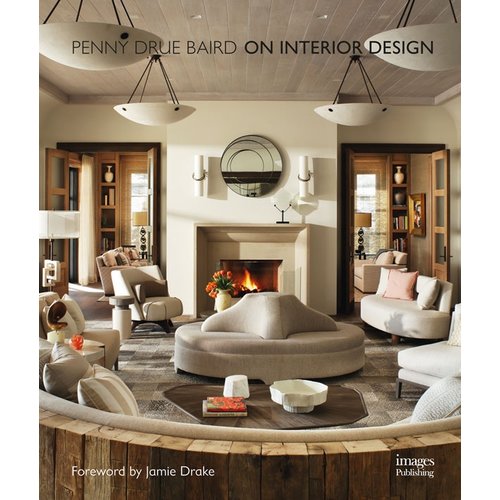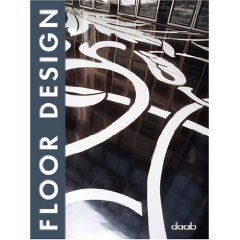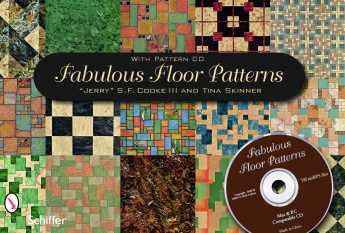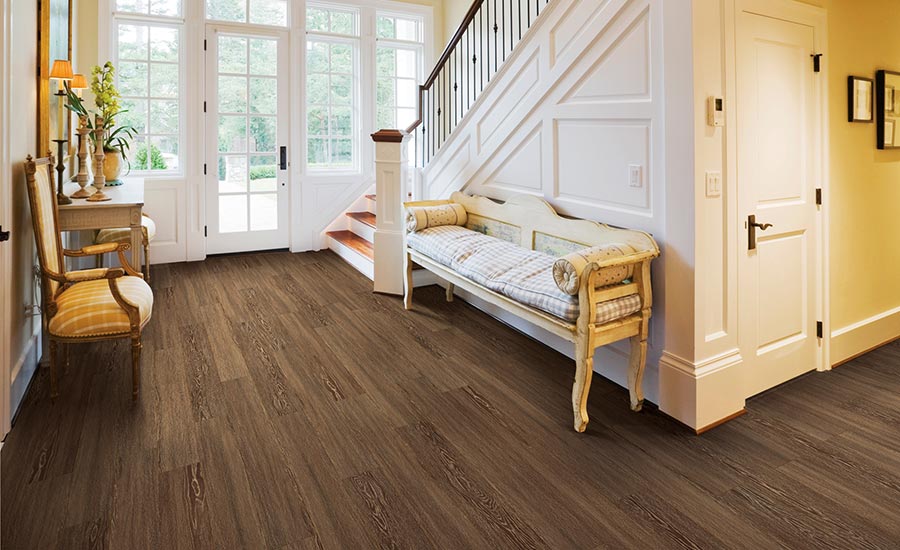Builder Market Flooring Trends

Photo: Daltile.

Builders are looking for floors that are long lasting and easy to care for. Shown here is UltraWood by Mohawk.
Photo: Mohawk.

EverStrand Genuine Quality carpet answers consumers desire for healthier homes. The fiber is made with recycled plastic bottles and offers added protection to repel liquid spills and soils.
Photo: Mohawk.

COREtec Plus HD 7” x 60” is designed to maintain is designed to withstand tough environments.
Photo: COREtec.




After many strong months for home builders across the United States, things have started to trend downward in April. According to the U.S. Department of Housing and Urban Development and the U.S. Census Bureau, building material costs and low inventory have caused new home sales prices to jump 20% on a year-over-year basis, harming housing affordability and driving down the pace of new home sales.
Sales of newly built, single-family homes fell 5.9% in April following a significant downward revision of the March estimate, to an 863,000 seasonally adjusted annual rate.
Regionally, on a year-to-date basis, new home sales rose in all four regions, up 50.7 percent in the Northeast, 45.7 percent in the Midwest, 45.5 percent in the South, and 3.6 percent in the West. These significant increases are due in part to lower sales volume during the COVID-19 crisis a year ago, according to the U.S. Department of Housing and Urban Development and the U.S. Census Bureau.
“Affordability factors are clearly affecting new home sales,” said Chuck Fowke, chairman of the National Association of Home Builders (NAHB) and a custom home builder from Tampa, Fla. “A growing number of builders are limiting sales in order to manage supply chains, including access and cost factors associated with lumber, appliances, and other building materials. Policymakers need to find ways to improve the supply-chain, by facilitating more domestic production, or in cases where that cannot be done, suspending tariffs to allow for more imports.”
“After a period of builders holding back price increases, new home prices were 20 percent higher year-over-year per the April Census data,” said NAHB Chief Economist Robert Dietz. “Higher costs have priced out buyers, particularly at the lower end of the market. A year ago, 45 percent of new home sales were priced below $300,000. In April 2021, only 27 percent of new home sales were priced below $300,000.”
The median sales price was $372,400, up from the $310,100 median sales price posted a year earlier.
“We’re seeing some short-term inflation really driven by raw materials and what I call the bullwhip effect,” said Tim Baucom, president and CEO, Shaw Industries. “The bullwhip effect is really like what we saw with gasoline after Continental Oil shutting down for seven days. Even though most people had two weeks of inventory, the pipeline was down for seven days, and that panic created people wanting to carry more gasoline, which created shortages, which then meant that you depleted inventory, which created this bullwhip of more and more and more reaction. We're seeing that for sure in raw materials, as people are trying to operate with higher inventories all through the channel.”
What does this mean for flooring?
“We are a part of the global supply chain and these macro issues affect us as well, particularly on hard-surfaces in containers,” said Jay Smith, vice president, sales, builder/multifamily, Shaw Floors. “We’re in better position than most, thankfully, and we’re working through that just as it is everyone—whether it's windows, doors—all the things that are coming from the other side of the world are impacted by this. On the carpet side, we're ready to roll on carpet, servicing our commodity carpet styles at a very robust level right now, and forecast that to continue through the summer as well.”
“We're seeing the continued growth of the bundles where builders tend to limit the amount of choice they offer because they, they simply don't need to offer more choices,” said Jay Smith, vice president, sales, builder/multifamily, Shaw Floors. “Since the pandemic, we're seeing a growing demand for healthy homes.”
To answer this demand, Shaw is taking inspiration from the commercial side of the business and its focus on health and sustainability for product development.
“Life is about choices, and consumers today are more conscious about spending and the impacts of their decisions,” said Troy Virgo, director of sustainability at Shaw. “In today’s environment, healthy home initiatives are top-of-mind with consumers. Wellness real estate, where Shaw and its customers operate, is a nearly $200 billion dollar industry. As interest in health and wellness becomes more mainstream, Shaw is well-positioned to help our customers have meaningful, informed conversations with consumers. No matter the specific need, Shaw offers a smarter, better product solution and we design our products to support goals for a clean, healthy home.”
“In today’s environment, healthy home initiatives are top-of-mind with consumers. Wellness real estate ... is a nearly $200 billion dollar industry.”
–Troy Virgo
The Made Smarter. Live Better. program was developed to help explain how Shaw’s flooring products can address consumer desires to live or work in a space that supports their wellbeing. Made Smarter. Live Better. messaging focuses on five pillars: material, moisture, sound, air and clean—all underscored by a keen focus on design. Through careful evaluation of these pillars and intentional collaboration between Shaw’s Sustainability and Residential Product and Marketing teams, the company’s Residential brands now offer detailed information to meet consumer needs and offer products that best align with their priorities.
“We spend 90 percent of our time indoors — even before COVID-19. So, it’s no wonder that the spaces where we live, work, learn and play have a significant impact on our wellbeing,” said Nina LoCicero, vice president of residential marketing and digital commerce for Shaw Residential. “Shaw designs products with both the planet and the human experience in mind. The pandemic has elevated our awareness of how the space we’re in makes us feel and the materials used in our environments — what they’re made of and, in the midst of heightened virus awareness, the importance of safe and effective cleaning habits.
Mohawk is seeing a similar trend with recent introductions to EverStrand that places an effort on cleaner home and a cleaner planet through high-fashion styles.
“Builder MultiFamily is ever evolving and constantly improving so that we can continue to meet every consumer’s need, no matter what 2021 throws at us,” said Scott Gibson, senior director of sales operations, Mohawk.
The type of flooring used depends on the neighborhood and the type of home.
For new housing developments built for middle-class families, vinyl flooring planks are the most popular choice, according to Melanie Musson, an interior décor consultant in Montana.
“Vinyl is inexpensive but comes in a wide variety of styles. Hardwood look-alike vinyl is popular for living areas,” she said. “Ceramic look-alike vinyl is often used in bathrooms. Middle-class homes are built to look more expensive than they are. So, one of the easiest ways to accomplish that is to use less costly features that mimic what you’d find in more luxurious homes.”
For higher-end houses, hardwood floors continue to be the standard. “They’re classic and a general favorite of buyers,” Musson said. “Gray-stained hardwoods are trending currently, but warm brown stains manage to remain a classic favorite as well.”
“We install more engineered hardwood flooring in single-family homes than any other variety,” said Ralph Severson, owner, Flooring Masters in New Albany, Indiana. “People love the look of hardwood because it is easy to clean, and always looks great with any decor. Each time I help a homeowner decide what to install, I explain that it is a cost effective alternative to solid hardwood and can still be refinished once or twice before replacing the floor. That it is a major step up from laminate flooring because once laminate is worn, it must be replaced entirely, and the ROI is better on engineered hardwood. It also has a much nicer appearance because it has a layer of real, solid wood on the surface versus the photographic image on laminate. This trend reflects homeowners looking to get the most bang for their buck by choosing a happy median. Engineered hardwood flooring looks just as good as solid hardwood, but saves money, and is more durable than laminate.”
“Typically for the main living areas in the custom homes we build, real hardwood and engineered hardwood floors have been the go-to, with tile floors being the choice for the laundry and the restrooms,” said Ben Neely, owner, Riverbend Homes in Spicewood, Texas. “We’ve noticed that more and more homeowners are considering vinyl flooring throughout the house for its longevity and cost savings. Because of demand, several brands are now marketing a luxury vinyl plank flooring which feature more realistic finishes and thicker wear layers for increased durability and resistance to scratches. If you have indoor pets, this is definitely something you want to consider.”
Some buyers are hyper focused on affordability, according to Volodymyr Barabakh, co-founder of BM International Builders, in Chicago.
“The rising tide of house prices lifts the price of everything to do with property,” he said. “Add this to the increasing costs of timber and people want cheaper materials that still have the look and durability of wood. The two most common flooring types that I am installing are vinyl and laminate. Both of these are made to look and feel like wooden flooring, and I think a big part of their recent popularity is the advancements in the authenticity of their look. High-quality vinyl and particularly laminate really does look and feel like wooden flooring.”
For existing home sales, purchases of high-end homes have soared as wealthy Americans have reaped the benefits of a strong stock market, swelling bank accounts and remote work, according to a Redfin analysis. A relative abundance of high-end homes hitting the market has also enabled purchases in that segment of the market to flourish.
“Higher-end homes are flying off the market, because the pandemic has fueled an uptick in demand for high-end amenities,” said Daryl Fairweather, chief economist, Redfin.
“This information shows that the market for tile sales is a good one,” said Patrick Warren, vice president of residential sales, dealer, and showrooms for Dal-Tile Corporation. “We already know that tile is aspirational – most people would like tile in their home. We know that tile increases the value of a home, and also that people are willing to spend more money on their kitchens and bathrooms than other rooms in their homes. The fact that high-end home sales surged nearly two times as fast as mid-priced homes during the first four months of this year is great news for retailers focused on tile sales; there is money in pockets to spend on tile versus cheaper surfaces.”
“On the remodel front, we are also seeing a more thorough and prepared selection process from the consumer/end-user which is leading to better goods being chosen,” Warren added.
Looking for a reprint of this article?
From high-res PDFs to custom plaques, order your copy today!












